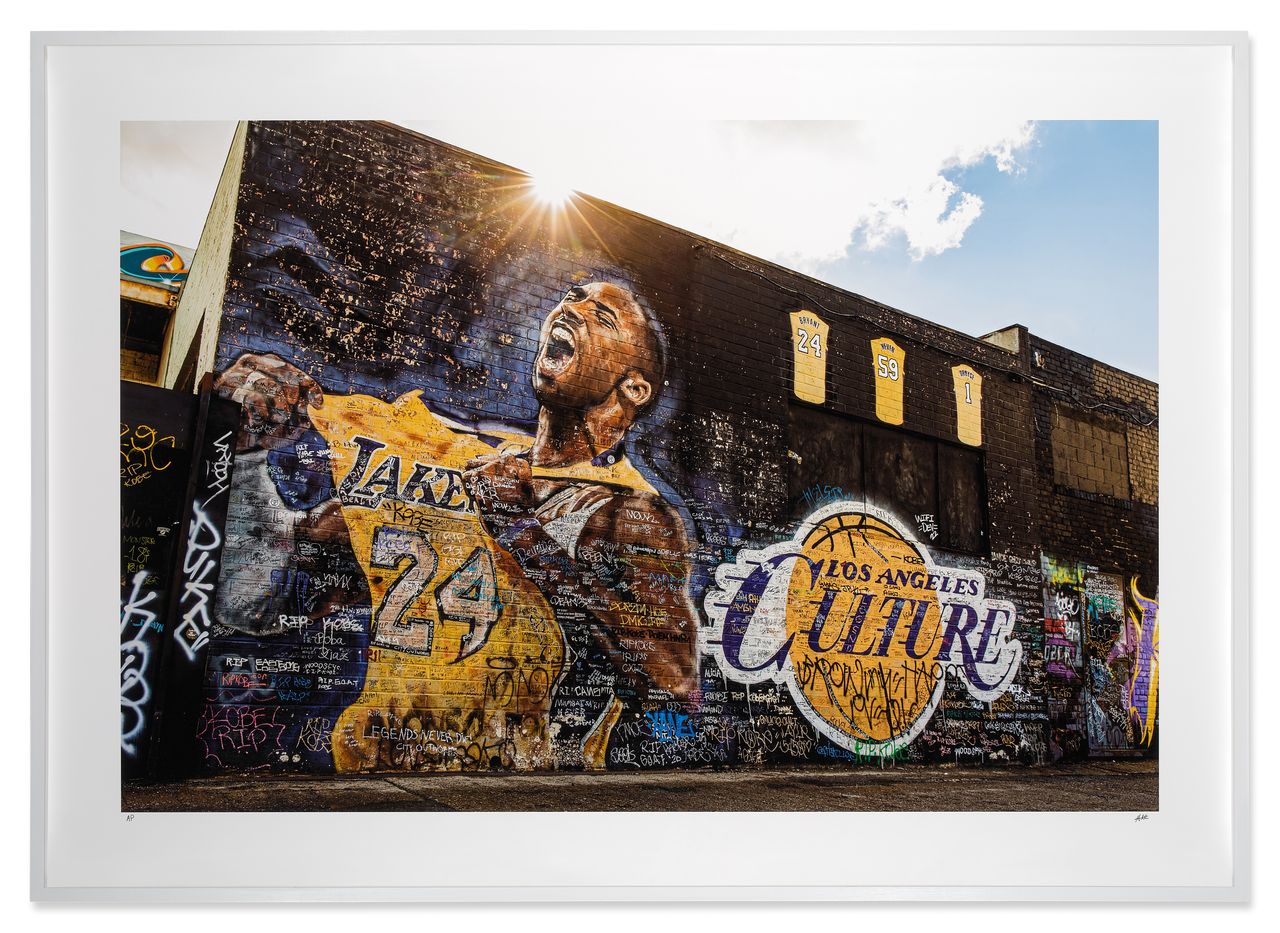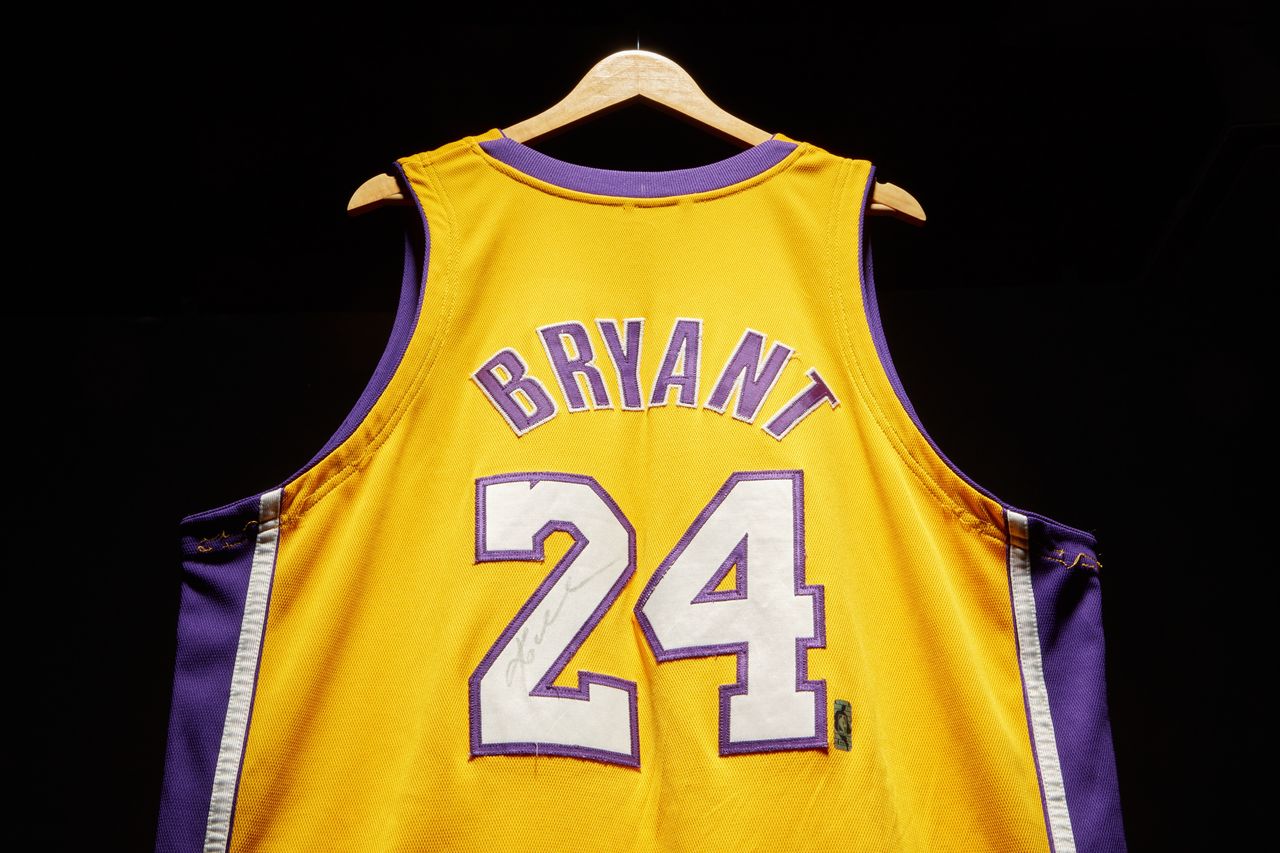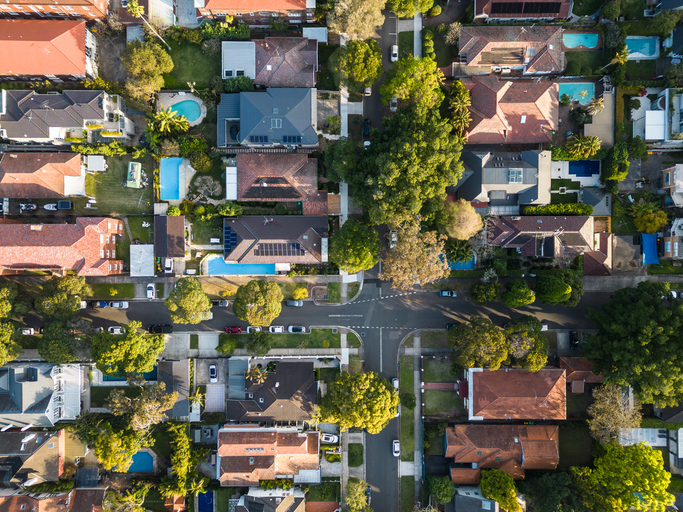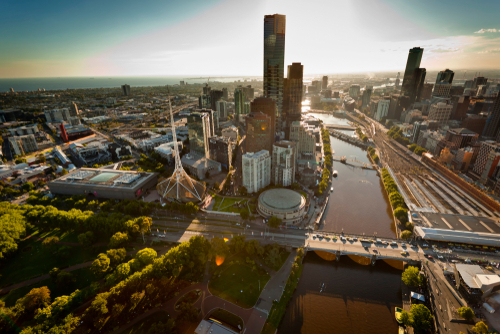Kobe Bryant’s Lakers Jersey Could Fetch a Record $7 Million at Sotheby’s
A Los Angeles Lakers jersey regularly worn and signed by Kobe Bryant will be auctioned next month with a high estimate of US$7 million, making it the most valuable Bryant jersey to appear on the open market.
The late basketball star wore the gold jersey on Lakers media day on Oct. 1, 2007, and throughout the NBA Western Conference finals on May 9, 2008. During the 2007-08 season, he scored 645 points in the same jersey over 25 games, according to Sotheby’s, which is handling the auction. He was named league’s most valuable player that year, his only MVP season.
This is also the only gold jersey Bryant wore during the 2008 NBA playoffs, Sotheby’s said. He wore it again for his official MVP portrait that year.
“Sports artifacts with this type of long-term, heavy wear are a rarity in the collecting space, with many modern items worn for just a single game,” Brahm Wachter, Sotheby’s head of streetwear and modern collectables, said in a news release.
This jersey has been featured in murals and artworks depicting the basketball legend across the globe. There are more than 15 such murals in California alone, including the painting by artist Jonas Never located near the team’s arena in Los Angeles, according to Sotheby’s.

A shooting guard, Bryant spent his entire 20-year professional career with the Lakers. He appeared in 18 All-Star games, won two Finals MVP awards, and two gold medals on the 2008 and 2012 U.S. Olympic teams.
Bryant, along with his daughter Gianna and seven others, died in a helicopter crash in Calabasas, Calif., in 2020. He was 41.
The jersey will be sold at Sotheby’s online from Feb. 2-9, with bidding starting at US$5 million. It will be on public exhibition from Feb. 1-7 in Sotheby’s New York galleries.
The auction house declined to disclose the identity of the consignor. The jersey is offered with a collection of photographs of Bryant in this jersey taken by Greg Cohen, and a number of related items, including artwork, t-shirts, pins, books, and more.
The current record for any item of Kobe Bryant sports memorabilia is a game-worn and autographed jersey from his 1996-97 rookie season. It sold for US$3.7 million in 2021 at Goldin Auctions.
 Copyright 2020, Dow Jones & Company, Inc. All Rights Reserved Worldwide. LEARN MORE
Copyright 2020, Dow Jones & Company, Inc. All Rights Reserved Worldwide. LEARN MORE
This stylish family home combines a classic palette and finishes with a flexible floorplan
Just 55 minutes from Sydney, make this your creative getaway located in the majestic Hawkesbury region.
Continued stagflation and cost of living pressures are causing couples to think twice about starting a family, new data has revealed, with long term impacts expected
Australia is in the midst of a ‘baby recession’ with preliminary estimates showing the number of births in 2023 fell by more than four percent to the lowest level since 2006, according to KPMG. The consultancy firm says this reflects the impact of cost-of-living pressures on the feasibility of younger Australians starting a family.
KPMG estimates that 289,100 babies were born in 2023. This compares to 300,684 babies in 2022 and 309,996 in 2021, according to the Australian Bureau of Statistics (ABS). KPMG urban economist Terry Rawnsley said weak economic growth often leads to a reduced number of births. In 2023, ABS data shows gross domestic product (GDP) fell to 1.5 percent. Despite the population growing by 2.5 percent in 2023, GDP on a per capita basis went into negative territory, down one percent over the 12 months.
“Birth rates provide insight into long-term population growth as well as the current confidence of Australian families,” said Mr Rawnsley. “We haven’t seen such a sharp drop in births in Australia since the period of economic stagflation in the 1970s, which coincided with the initial widespread adoption of the contraceptive pill.”
Mr Rawnsley said many Australian couples delayed starting a family while the pandemic played out in 2020. The number of births fell from 305,832 in 2019 to 294,369 in 2020. Then in 2021, strong employment and vast amounts of stimulus money, along with high household savings due to lockdowns, gave couples better financial means to have a baby. This led to a rebound in births.
However, the re-opening of the global economy in 2022 led to soaring inflation. By the start of 2023, the Australian consumer price index (CPI) had risen to its highest level since 1990 at 7.8 percent per annum. By that stage, the Reserve Bank had already commenced an aggressive rate-hiking strategy to fight inflation and had raised the cash rate every month between May and December 2022.
Five more rate hikes during 2023 put further pressure on couples with mortgages and put the brakes on family formation. “This combination of the pandemic and rapid economic changes explains the spike and subsequent sharp decline in birth rates we have observed over the past four years,” Mr Rawnsley said.
The impact of high costs of living on couples’ decision to have a baby is highlighted in births data for the capital cities. KPMG estimates there were 60,860 births in Sydney in 2023, down 8.6 percent from 2019. There were 56,270 births in Melbourne, down 7.3 percent. In Perth, there were 25,020 births, down 6 percent, while in Brisbane there were 30,250 births, down 4.3 percent. Canberra was the only capital city where there was no fall in the number of births in 2023 compared to 2019.
“CPI growth in Canberra has been slightly subdued compared to that in other major cities, and the economic outlook has remained strong,” Mr Rawnsley said. “This means families have not been hurting as much as those in other capital cities, and in turn, we’ve seen a stabilisation of births in the ACT.”
This stylish family home combines a classic palette and finishes with a flexible floorplan
Just 55 minutes from Sydney, make this your creative getaway located in the majestic Hawkesbury region.






















